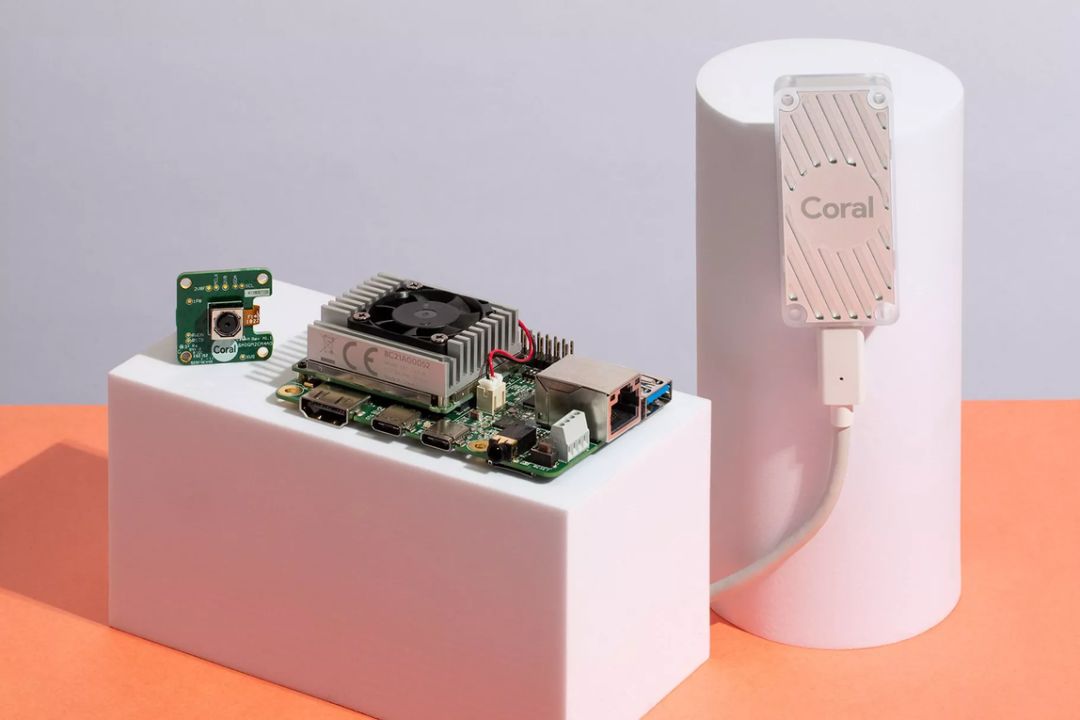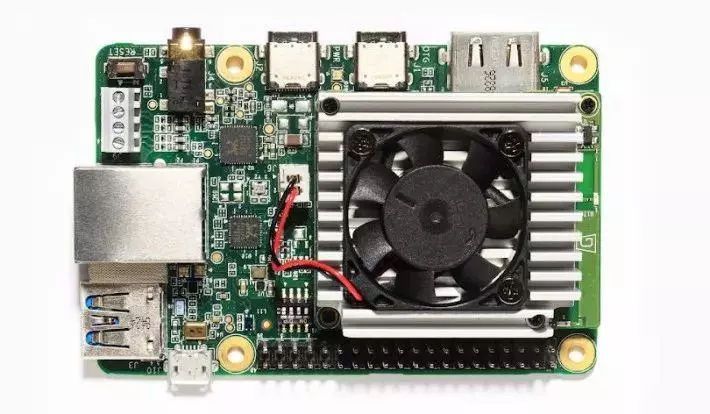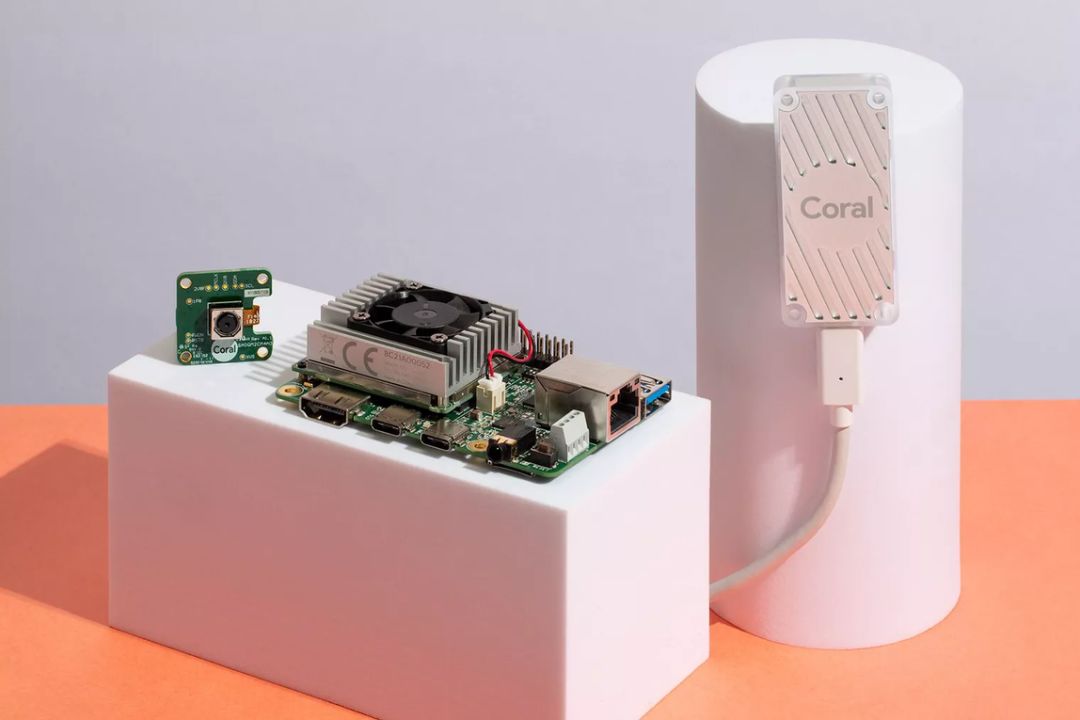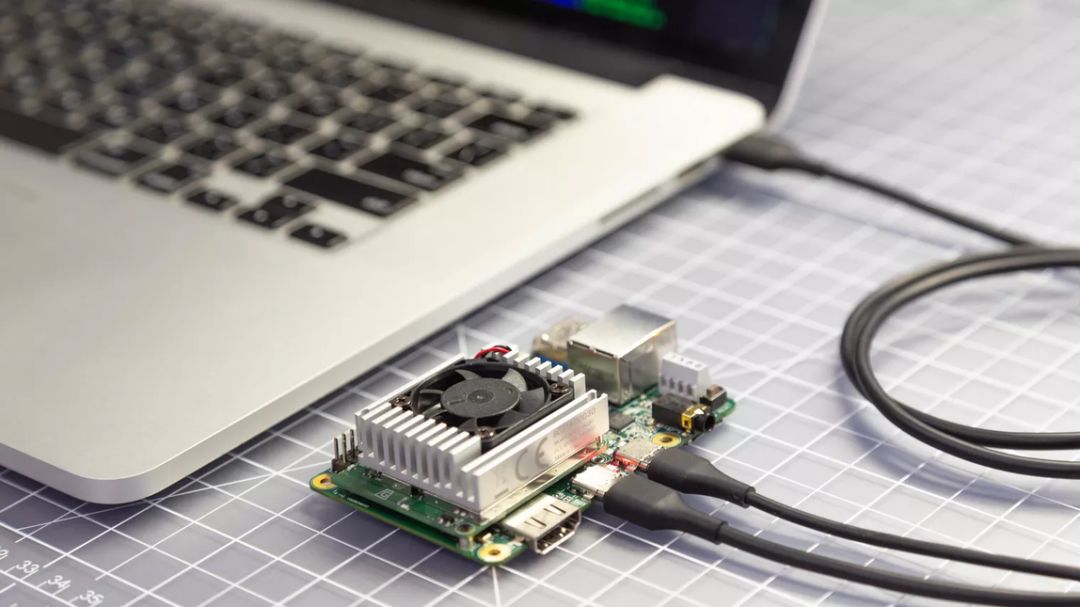Most orders are from a single component
Editor’s note: This article comes from WeChat public account The power of machines (ID: almosthuman2017) , The author is slightly fat.

In the edge computing market of the giant ring, for Google, the appeal of Coral is not necessarily revenue, but information and experience about how artificial intelligence is applied to important scenarios.
Coral is a platform composed of Google’s hardware and software components, focusing on automotive and healthcare scenarios. Despite binding the Google ecosystem to achieve differentiated competition, most of Coral’s current orders are single components, with only a few customers starting at 10K.
In March last year, Google launched a local terminal AI platform called Coral, which includes TPU, Coral Dev Board, USB accelerator, and camera.
The platform emphasizes the improvement of excellent ML inference performance at a low power level. It can perform the most advanced mobile vision models such as MobileNet v2 with good power performance, and the fps can reach more than 100.
Based on the Coral platform, Google released five devices, which are single-board computers “Coral Dev Board” (composed of Edge TPU module and Baseboard) that cost less than 1,000 yuan, and those that support Raspberry Pi or Debian Linux computers. A USB accelerator, a 5-megapixel lens module for the Dev Board, a system board (SoM) for the Dev Board, and a PCI-E accelerator that easily integrates the machine learning accelerator Edge TPU with existing computer systems.

Coral Dev Board with Edge TPU machine learning acceleration
Initially, the project launched a beta version in selected regions. After more than six months of feedback and improvements, Coral graduated from the beta version in October last year and launched a global release version in more regions.
1 The origin of Coral
Although Coral’s target customers are enterprises, the project originated from Google’s “AIY” series of self-service machine learning tools. In 2017, Google launched the AIY kit. With the support of a Raspberry Pi computer, anyone can make their own smart speakers and smart cameras.
Although the project has achieved great success in the STEM toy and manufacturer market, the AIY team also quickly noticed that some customers just want to make toys according to instructions, but some customers want to transform the hardware into their own Product prototypes, Coral was born to meet these customers.

Some Coral series hardware products, including artificial intelligence accelerator (far right) and development board (middle)
In 2019, Dev Board, USB Accelerator, and multiple PCIe Accelerator product portfolios have been launched and have been deployed in 36 countries worldwide. At this year’s CES show, Google further updated its platform, launched a number of products, and expanded its application.
The first new product is the Accelerator Module. This multi-chip module includes an Edge TPU ASIC and supports PCIe and USB interfaces. It can be embedded with a custom printed circuit design. It is a Google and Japanese electronic component manufacturer. Murata co-created.
The second product is the Dev Board Mini development board, which is smaller than Dev Bo.The ard is smaller in size and equipped with MediaTek 8167s SoC, which can achieve 720P resolution image encoding / decoding and computer vision applications, with lower power consumption and more economical benefits. Both are expected to be officially launched in the first half of 2020.
Google also created different versions of the Coral System Module (SoM). In addition to the original 1GB LPDDR4 configuration, it has added 2GB and 4GB configurations.
The rapid development and maturity of artificial intelligence have allowed robots to perform various tasks that were previously only performed by humans.
For quality control on factory production lines, AI-driven cameras can be set to detect defects; in order to efficiently process large amounts of medical data, people can use machine learning to identify potential tumors to help doctors prevent and treat them in a timely manner.
However, these application scenarios can only be completed if the data processing is fast enough and secure. If the AI camera takes a few minutes to process the image in a factory environment, it doesn’t make sense. If patient data needs to be transferred to the cloud, there is bound to be a risk of medical data being leaked. And Google’s Coral project is looking to address these issues.
Data from (Artificial Intelligence) devices is usually sent to large data centers where machine learning models can run at high speed. Coral’s product manager Vikram Tank explains that Coral is a platform composed of Google’s hardware and software components that helps users build devices with local artificial intelligence, that is, to provide hardware acceleration for neural networks on edge devices.

Like a development board (above), Coral’s products can be used to prototype new AI devices.
2 Two core scenes
Coral is not only designed to help engineers and researchers bring new models out of the data center and into the equipment to run TensorFlow models efficiently at the edge. In essence, it is also the new edge hardware in agriculture, healthcare, and manufacturing industries. The core of the application.
Imagine a car traveling at 65 miles per hour in just 100 milliseconds across a distance of 10 feet, which means that anyDelay will be the life risk of the parties. If the data analysis and calculation can be performed on the device side, without being limited by the slow network delay, seeing the signal lights turn red and stop immediately, the parties will be much safer.
In the medical field, leaving analytics on the device side can also greatly improve privacy issues. Especially for medical device manufacturers who use image recognition to perform real-time analysis of ultrasound images, sending patient images to the cloud will undoubtedly become a weak link for hackers. If images are analyzed on the device, these sensitive data It will not go beyond the control of doctors and patients.
Some market analysts predict that by 2020, edge-end AI chips and computers equipped with them will exceed 750 million units / units, and by 2024 they will grow to 1.5 billion units. Although most of these will be installed in consumer devices such as telephones, the vast majority will be used by corporate customers in the industry such as automobiles and healthcare.
Coral product managers have made it clear that single engineers can use these hardware to build smart marshmallow sorters or bird feeders, but the project’s long-term focus customers are the automotive and healthcare industries.

Google’s Edge TPU is also at the core of most Coral products.
3 Different competition that binds ecology
Google recognizes that more and more industries have recognized the value of localized AI and are indeed driving machine learning on devices.
At this year’s I / O conference, in addition to the voice recognition model on the Pixel 4 device displayed at the I / O conference, they also announced the “Local Home SDK”, which allows connected home devices without the need to connect to the cloud. Can be operated directly
But the problem for Google is that there are dozens of companies with goals similar to Coral. In particular, the improvement and strength of the edge-end AI layout of the giants are further enhanced, and the competition in the edge-end chip market has become more intense.
For example, this is a strategy that Apple has adopted from the beginning, especially after John Giannandrea left Google to become Apple’s head of machine learning and artificial intelligence. Recently, Apple has included Xnor.ai in its pocket. The focus of this startup is on machinesLearning and image recognition tools that can run on low-power devices without relying on a cloud computing architecture. Prior to this, Apple acquired Silk Labs, an artificial intelligence startup that focuses on privacy.
Jetson is Nvidia ’s product line for the embedded market, and it is the benchmark for Intel Movidius. Different from other edge SoCs, the Jetson family emphasizes running multiple neural networks in parallel. As of now, Jetson has released four series, mainly deployed in edge and terminal applications, suitable for applications such as robots, drones and smart cameras.
However, following Nvidia ’s smallest edge supercomputing, Intel pushed the VPU 10 times to compete with it.
In the Chinese market, Huawei launched the first edge-computing brand to rise. In addition to targeting terminal intelligent products such as robots and intelligent manufacturing, it is also an important layout of Huawei’s security smart cameras and edge computing.
In this regard, the Coral team said that considering the large number of competitors in the market, they tightly integrated the hardware with Google’s artificial intelligence service ecosystem to differentiate themselves. In fact, chips, cloud training, and development tools have also been key advantages of Google’s artificial intelligence services. For example, Coral has an artificial intelligence model library that specializes in hardware compilation.
Coral is tightly integrated with Google ’s artificial intelligence ecosystem, so that TPU-based edge hardware can only be compatible with Google ’s machine learning framework TensorFlow. For potential market users, these deep bindings may be counterproductive.
Kneron said in an interview with the media that although Google’s entry into this market has verified and promoted innovation in this field, Coral products are designed for the Google platform, and their products support all major AI frameworks and models in the market.
It is certain that Google will not promote Coral as vigorously as the introduction of cloud AI services. A source familiar with the matter told the media that most of Coral’s orders are for certain components (such as AI accelerators and development boards), with only a few customers starting at 10K.
However, as machine learning inevitably moves from the cloud to the edge, for Google, Coral ’s appeal is not necessarily revenue, but rather provides information and experience on how artificial intelligence is applied to important scenarios.


Coral is not only designed to help engineers and researchers bring new models out of the data center and into the equipment to run TensorFlow models efficiently at the edge. In essence, it is also the new edge hardware in agriculture, healthcare, and manufacturing industries. The core of the application.
Imagine a car traveling at 65 miles per hour in just 100 milliseconds across a distance of 10 feet, which means that anyDelay will be the life risk of the parties. If the data analysis and calculation can be performed on the device side, without being limited by the slow network delay, seeing the signal lights turn red and stop immediately, the parties will be much safer.
In the medical field, leaving analytics on the device side can also greatly improve privacy issues. Especially for medical device manufacturers who use image recognition to perform real-time analysis of ultrasound images, sending patient images to the cloud will undoubtedly become a weak link for hackers. If images are analyzed on the device, these sensitive data It will not go beyond the control of doctors and patients.
Some market analysts predict that by 2020, edge-end AI chips and computers equipped with them will exceed 750 million units / units, and by 2024 they will grow to 1.5 billion units. Although most of these will be installed in consumer devices such as telephones, the vast majority will be used by corporate customers in the industry such as automobiles and healthcare.
Coral product managers have made it clear that single engineers can use these hardware to build smart marshmallow sorters or bird feeders, but the project’s long-term focus customers are the automotive and healthcare industries.

Google’s Edge TPU is also at the core of most Coral products.